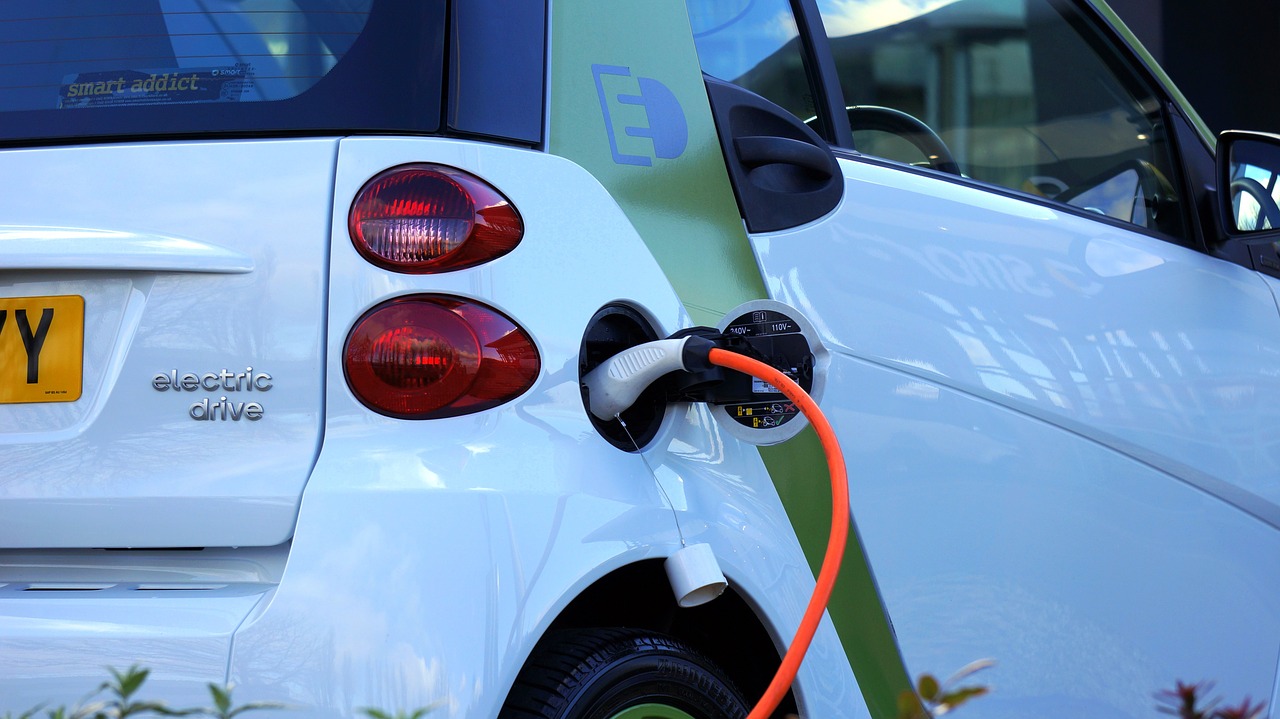The Definitive Guide to Electric Cars in Canada
By Eric Swanson, for The Narwhal
You’ve seen them around. They used to look ridiculous, but now they’re starting to look kind of cool. Electric vehicles are getting better all the time and represent the mostly undisputed future of motorized transportation.
But should you get one? Like, right now? Or never? Or should you wait?
If you can easily afford $75,000 to $125,000 on a Tesla Model S or Model X, then I’ll make this easy for you: yes, you should obviously buy a magical space car.
For the rest of us, it’s harder to decide.
Having owned an electric car for a couple of years, I’ll help you come at this from three angles.
First, we’ll explore what kind of car person you are — what do you really want out of a vehicle? Second, we’ll wrestle with the most common concerns of going electric. And last but not least, we’ll run through the current options and costs.
First, ask yourself: Who am I?
When you’re at the movies, suffering through 20 minutes of ads at the beginning, does a little piece of you want to be that person driving their Jeep over giant rocks on the way to a mountaintop sunset? Or would you prefer to be with those hip young people driving their sensible-but-sporty Toyotas, blasting beats on their way to the club?
When it comes to this whole electric car question, who do you think you are?
Eco-warrior
If your number one motivator is a desire to not unnecessarily contribute to harmful air pollution and climate change, you drive relatively often, you can manage $300 to $500 monthly payments, and there’s some semblance of a charging network where you live, then there’s little reason left not to get an electric car.
Weekend Warrior
If you want a vehicle to go adventuring with, are blessed with reasonable quick-charging infrastructure in your neck of the woods, can afford payments on a $30,000 to $45,000 car tricked out with good tires, chains and gear storage, you can make it work.
But you’ll need to cultivate some serenity now as you experience anticipated and unanticipated delays … especially while the rest of your friends effortlessly cruise up gnarly back roads in their sweet late-’90s 4Runners.
Daily Commuter
If you just need a car to get to work and run some errands, the good news is that for years most electric vehicles have had plenty of range to handle that. The savings on fuel and maintenance can add up fast — some estimates peg it at about $3,000 per year compared to a conventional car. If you have access to a wall outlet or dedicated charger at home or at work, going electric starts to feel kind of obvious.
Tech Junkie
If you upgrade your phone every year, follow Elon Musk on Twitter and have informed opinions about cryptocurrencies and AI, then you’ve probably been holding off until you can get a Tesla — the undisputed champions of electric vehicle style and wizardry.
Now that the company’s much-anticipated mass market Model 3 is rolling off assembly lines, your torturous wait may be over. Why haven’t you sold a kidney and ordered one?
Penny Pincher
If your main concern is owning the cheapest possible vehicle, then a lot will depend on your specific situation, including key variables like availability of local rebates, gasoline and electricity costs, and how much you intend to use the car. Spreadsheet time!
There are some smoking deals out there on used models, and you’ll definitely save on fuel and annual maintenance, but may risk higher depreciation costs and/or a costly battery replacement after the typical five to eight-year warranties expire.
If you’re not interested in spreadsheets and want things to be dead obvious — like, you walk into a showroom and the electric vehicles are cheaper — you might have to wait till 2025.
Driving Nut
If you love the feeling of near-instant acceleration, smooth handling and think it would be cool to hear birds while driving on those winding country roads (no seriously, that happens), you’ll probably find electric cars super fun.
Addressing your electric vehicle anxieties
Okay, so we’ve explored your innermost motivations, but what about . . .
Are electric vehicles really green?
Let’s be real, personal vehicles of any kind aren’t super green. They take lots of resources to manufacture, they take up space, contribute to sprawl, etc.
It would be better if we could walk, bike and take clean public transit everywhere. Or at least car share.
But, for now, those options aren’t always practical — which is why you might be thinking about getting an electric car.
In which case, it’s helpful to break the “is it green” question down into two parts: greenhouse gas emissions, and everything else.
When it comes to greenhouse gases, there are two big considerations: (1) how your local electricity is generated, and (2) the carbon dioxide produced manufacturing the fancy battery cells.
The most recent analysis shows that even if you live in Alberta — which currently gets two-thirds of its electricity from coal — by going electric you’ll still cut your greenhouse gas emission by an average of 25 per cent over the life of the car, compared to a conventional vehicle, even taking into account battery manufacturing.
That same analysis reveals that overall, Canada has seven of the top 10 best locations in North America for reducing greenhouse gas emissions by driving an electric vehicle. In other words: many Canadian jurisdictions have relatively low-carbon electricity sources.
The “everything else” of green includes harmful tailpipe emissions (none for an electric vehicle), and the mining of rare earth minerals (arguably the biggest problem with electric vehicles).
If you’re concerned about mining, it’s helpful to remember that every drop of oil is essentially mined from the earth before being processed into fuel for your car, with myriad detrimental impacts that go beyond carbon emissions.
In short, yeah, in most provinces electric vehicles are definitely greener.
What about range?
This is many peoples’ number one concern, and for good reason. On road trips — when range truly becomes an issue — I can tell you the anxiety sweat is real.
Tip number one is to figure out how much range you actually need. If you’re going to use it as daily commuter/grocery getter, even old school electric vehicles probably have you covered (e.g. a 2013 Nissan Leaf gets you more than 100 km), especially if you can charge at home or at work (using a normal wall outlet or dedicated charger).
But if you’re gonna road trip with this thing, here’s the deal:
- With many models it’s totally doable, so if you’re like 40 per cent of people and worry about range on longer trips, don’t let this stop you. In fact, the forced-scenic routes and charging downtime can actually make it way more fun than mind-numbing uninterrupted highway driving.
- That said, until Fast Chargers (which can charge a battery in 30-60 minutes) are as ubiquitous as gas stations, you’re probably going to want as much range as you can afford.
- The latest EVs under $50,000 (more on them in a minute) have ranges up to 383 km on a single charge.
- Go to Plugshare.com and start looking for orange balloons (Fast Chargers) between your home and some road trip destinations. Ideally you have enough range to get between orange balloons with a good 20 to 25 per cent wiggle room. You can use green balloons — Level 2 chargers that will take several hours to fully charge your battery — and creative use of downtime to get you through a desolate stretch.
- Range significantly drops when you start pushing 100 to 120 km/hr, and plummets when you’re climbing steep hills (though it averages out on the way back down). Just know to give yourself lots of wiggle when you’re trying a trip for the first time.
- Sometimes you’ll pull up to a Fast Charger and it’ll be broken, and there’ll be nothing you can do about it except plug-in to a nearby Level 2 and chill.
- Even if you’ve got lots of orange balloons between you and the family cabin, some batteries will overheat after a certain number back-to-back fast charges. Our 2016 Nissan Leaf (171 km on a single charge) gets too hot after about three fast charges, for a maximum “daily range” of about 400 to 500 km.
- That whole concept of “daily range” isn’t much talked about, but it’s super important if you plan to push your electric vehicle’s limits. Probe your dealer about it, and ask about battery cooling systems (passively cooled = lowest daily range; actively cooled = highest daily range). A big downside of all Nissan Leafs (including 2018 models) is they rely on passive cooling.
Is this thing going to be obsolete?
Maybe. The fast-changing nature of the industry is one reason why 80 per cent of electric vehicles in the U.S. are leased. People don’t want to be stuck with antiquated tech.
But keep in mind that charging infrastructure is improving all the time, too, making it more attractive and cost-effective to stick with the electric vehicle you’ve got vs. getting all iPhone about it.
And also keep in mind that the economics of leasing vs. buying will vary from province to province and from year to year. If you do plan on ditching your electric vehicle after a few years, you’ll just have to do the math to see which option makes the most sense.
Your current electric car options in Canada
Now that we’ve explored your fears, let’s check out the current options. For simplicity I’ll stick to all-electric models, but there are an increasing number of hybrid options, including badass pickup trucks.
If you’re looking for an affordable all-electric vehicle in 2018 you’ll be looking at small to midsize cars and motorcycles — with the exception of a small number of limited-range Toyota Rav4 conversions and other rare finds.
- Cheapest:You can find something like an early model Nissan Leaf for as little as $10,000 (e.g. 2011) or about $15,000 (e.g. 2013/2014). These can be a smoking deal if the battery is in good shape, but beware if it’s not. With about 100 km of range, most road trips would be a significant challenge (make sure to check if used models have fast-charge capability), but this could be a good low maintenance car for short commutes and running errands.
- Average: You can find a two- to three-year-old Nissan Leaf or equivalent in the $20,000 to $25,000 range, with slight range and battery improvements over earlier models that add a degree of comfort and convenience.
- New:2018 marks a step change for electric vehicles, with the Chevy Bolt, Tesla Model 3, next generation Nissan Leaf and others achieving 50 to 100 per cent more range than previous years at comparable price points. These will run you anywhere from $36,000 for 2018 Nissan Leaf (243 km range) to $43,000 to $45,000 for base models of the Chevy Bolt (383 km range) or Tesla Model 3 (354 km range), before rebates.
Rebates
There aren’t rebates from the federal government on electric vehicles yet, but several provinces do offer rebates. Incentives in Ontario range from $5,000 to $14,000, in B.C. the rebate is $5,000 and in Quebec the rebate is up to $8,000.
Your near-future options
Who wants an affordable, all-electric SUV with long range? Everyone.
And it looks like everyone will have to wait until about 2020 before several manufacturers start releasing their first attempts, with “affordable” likely meaning somewhere in the range of $40,000 to $45,000 (cough).
Over the next two years we’ll see an explosion in variety of electric vehicles on the market, but the variety will mostly be in style rather than substance.
Into the sunset
Sooner than we probably think, gasoline and diesel vehicles will drive off into the sunset, becoming the exception rather than the rule. For example, India, France, Britain and Norway have already set targets to eliminate their sale by between 2025 to 2040.
How long you want to hang on is up to you, but for many people — from eco-warriors to penny pinchers, the choice to go electric is getting clearer by the day.
Author Eric Swanson is the Executive Director of Generation Squeeze, an advocacy group for younger Canadians.
























